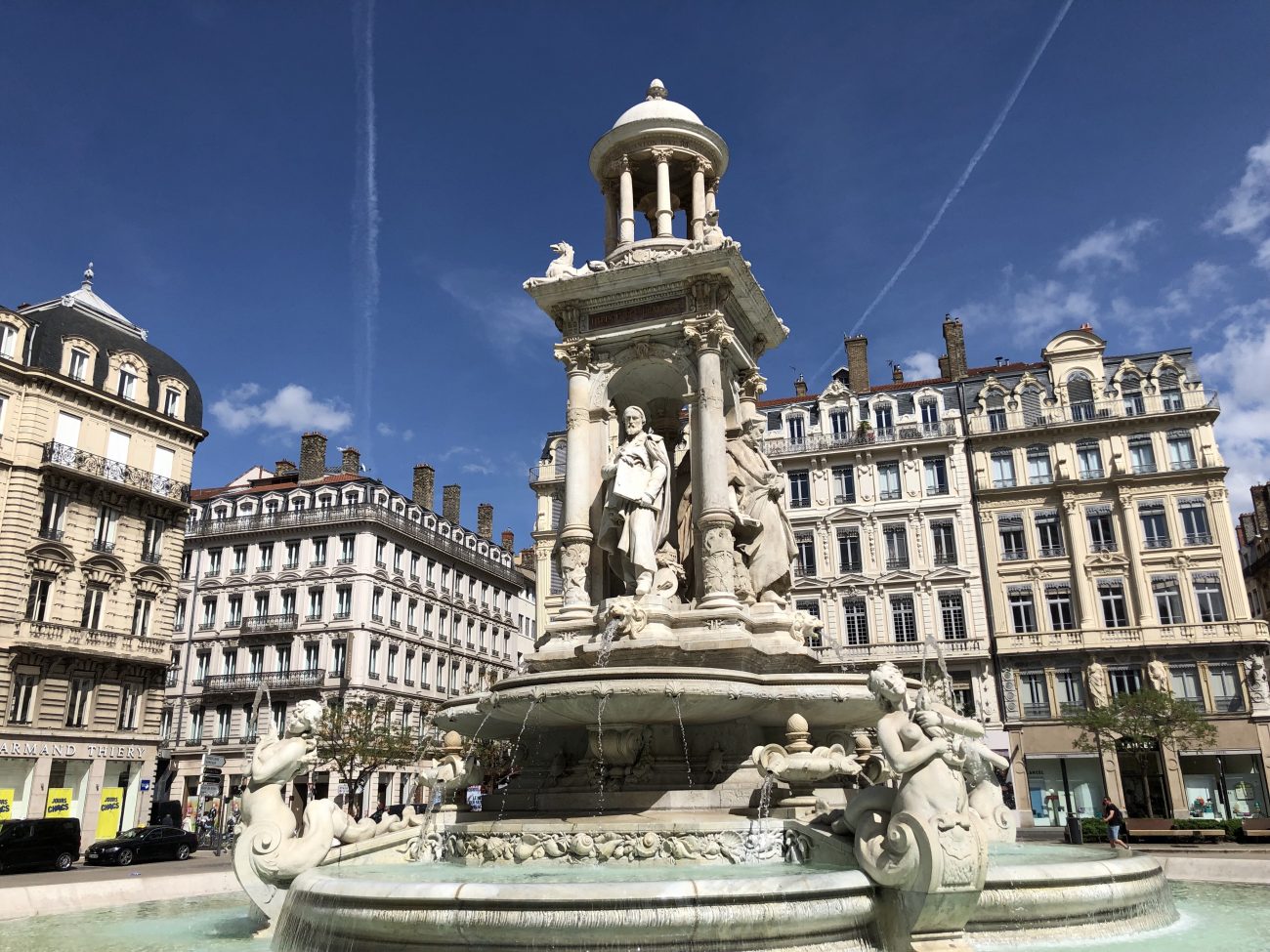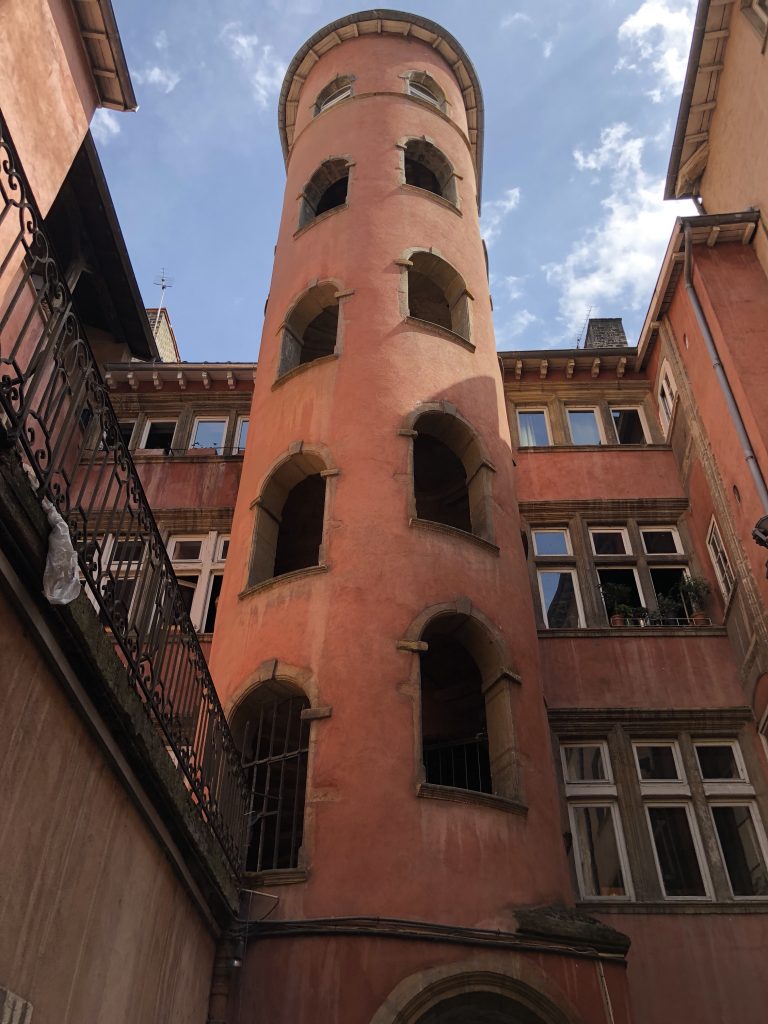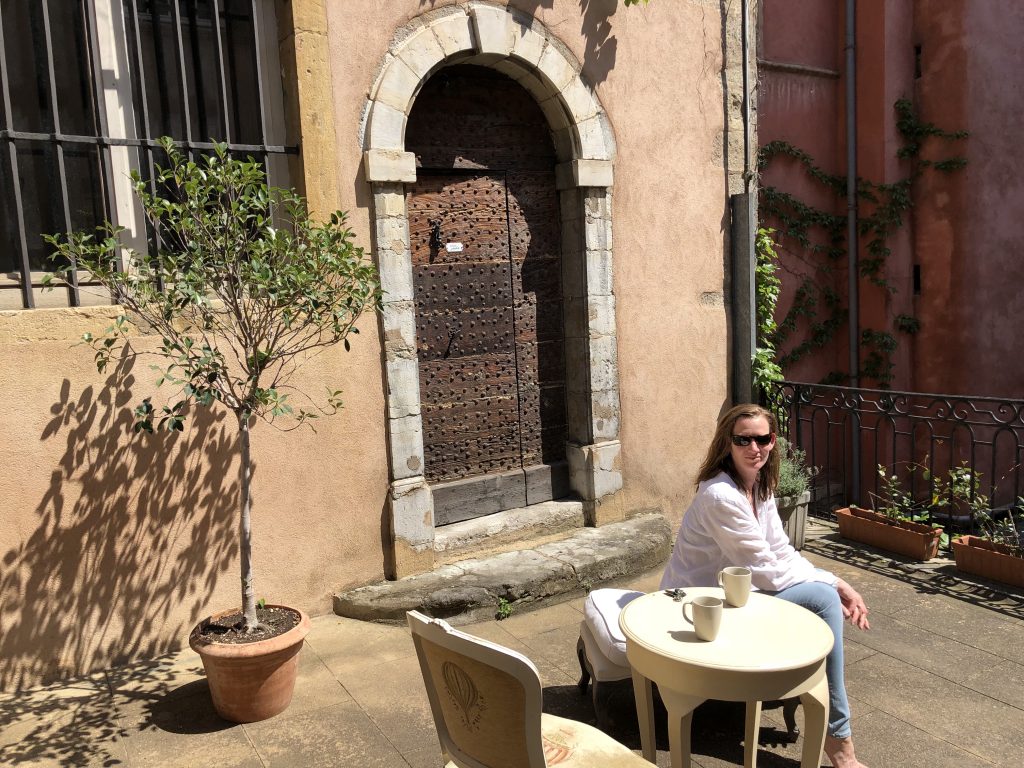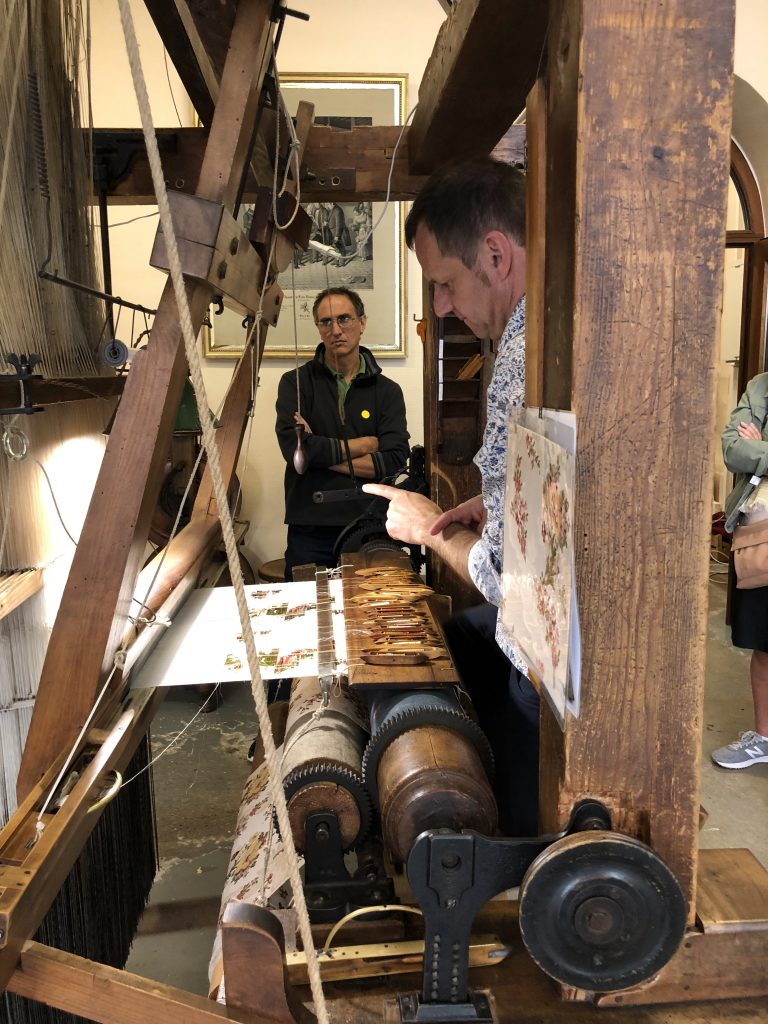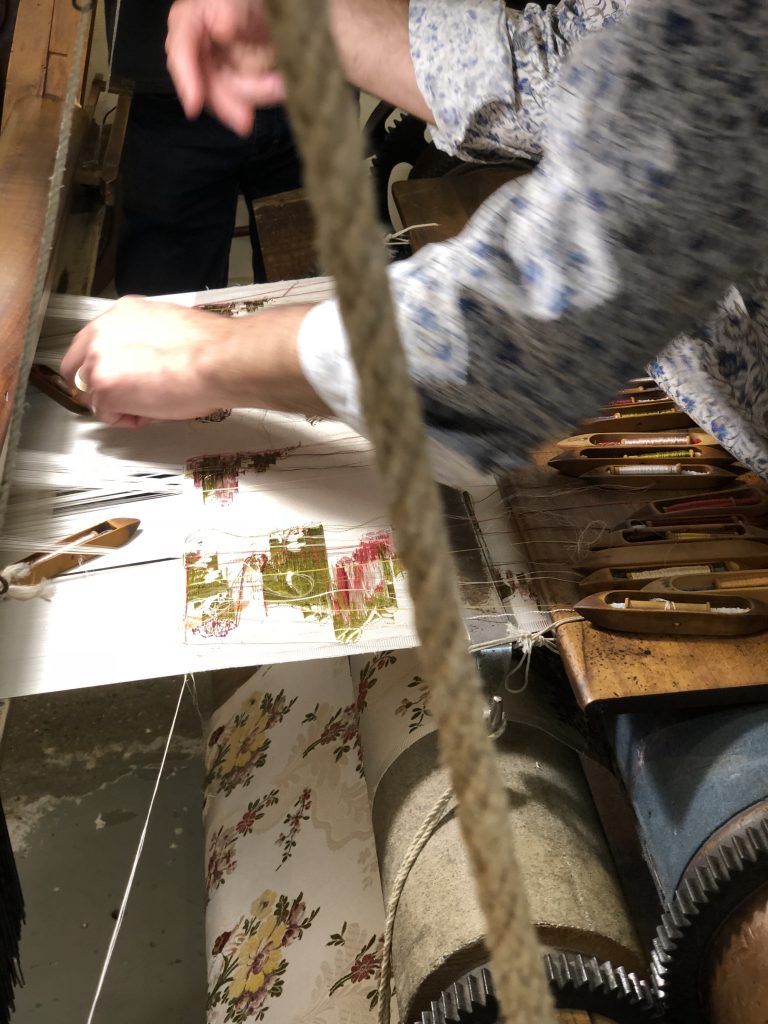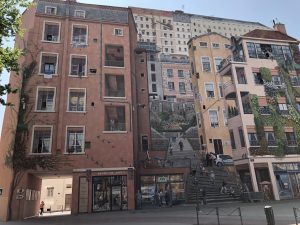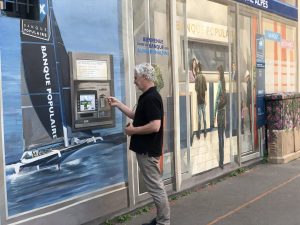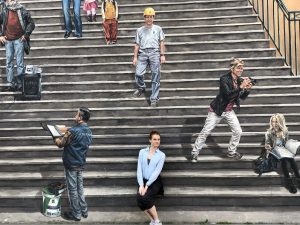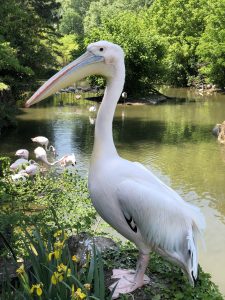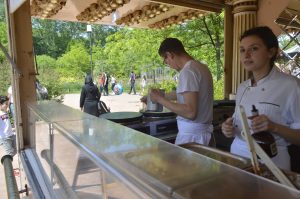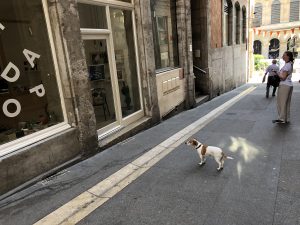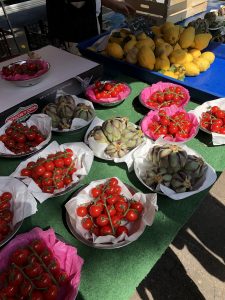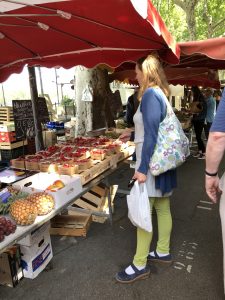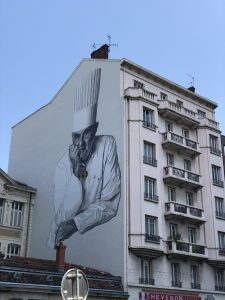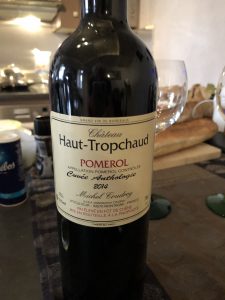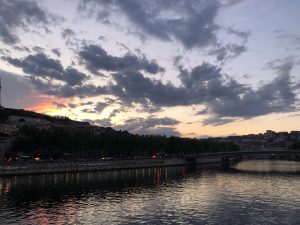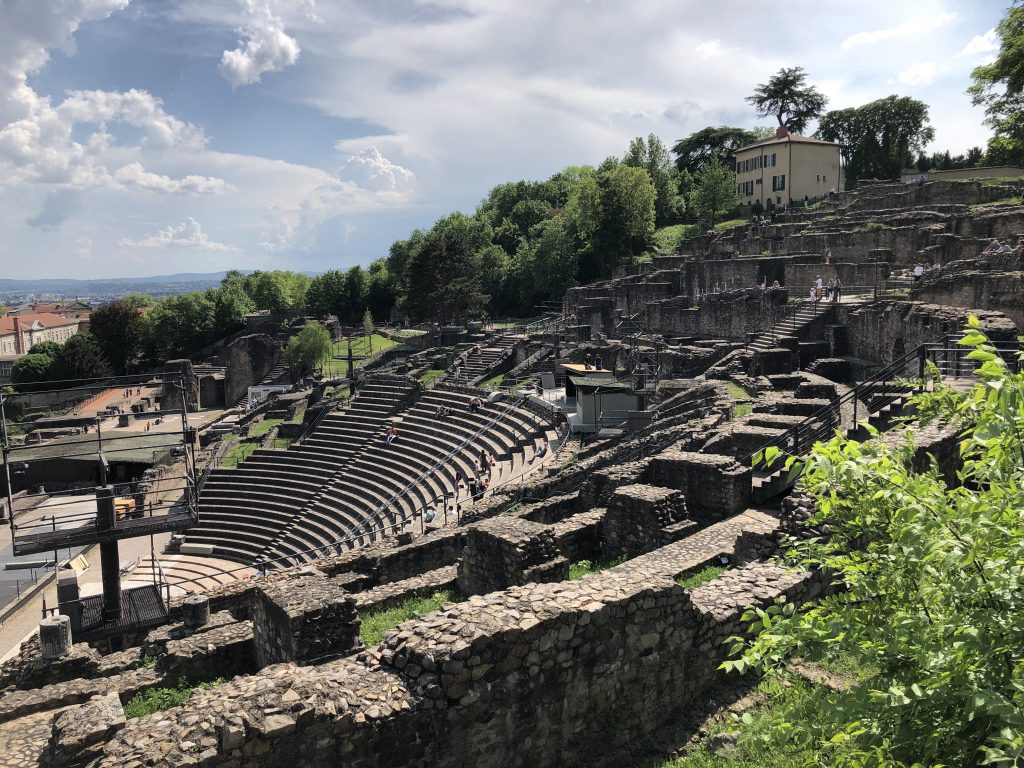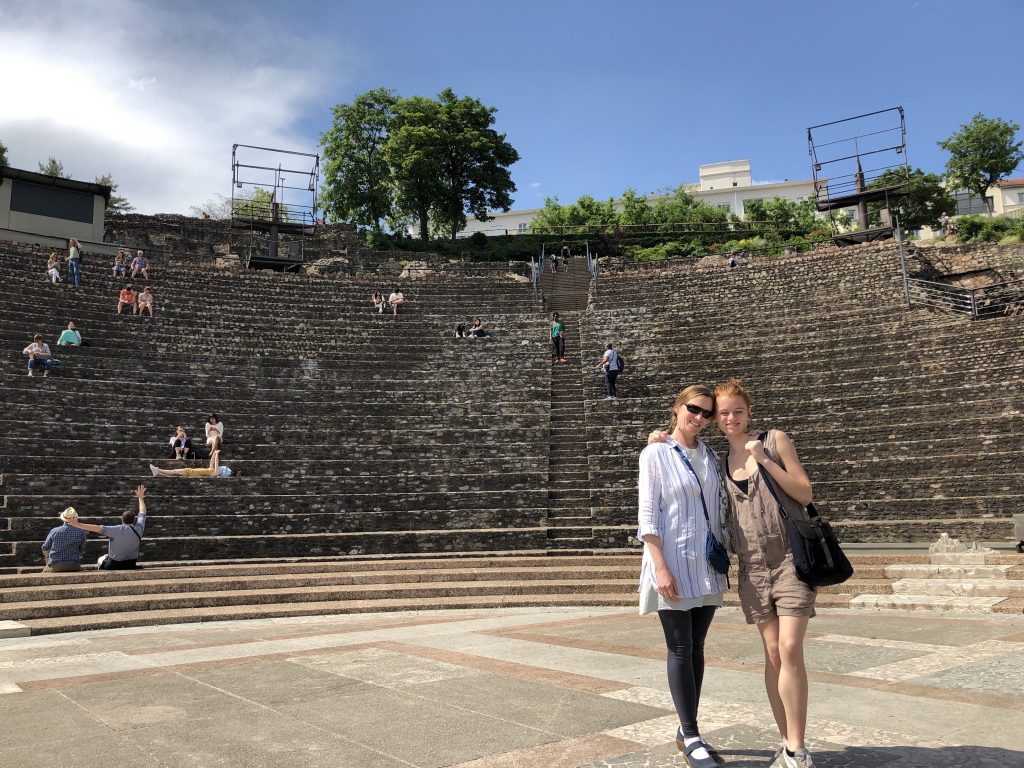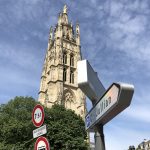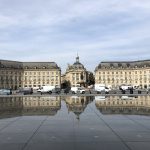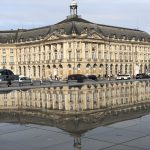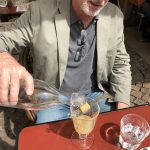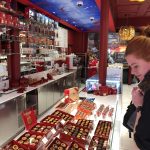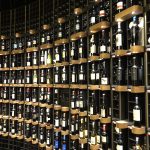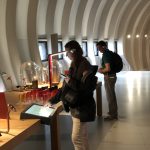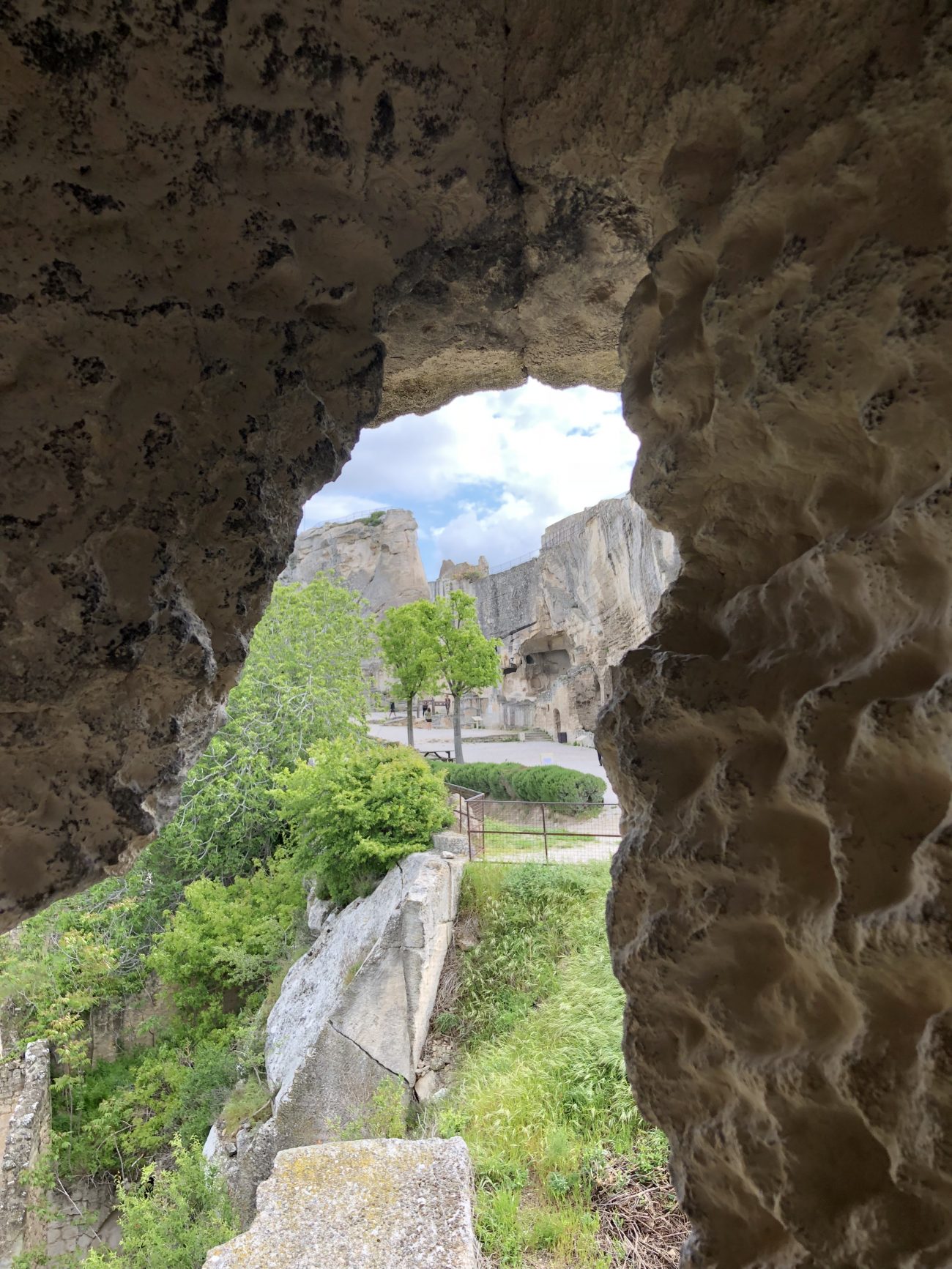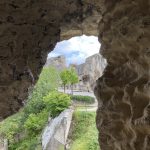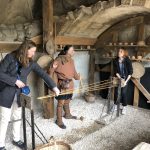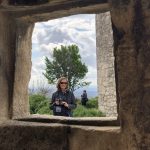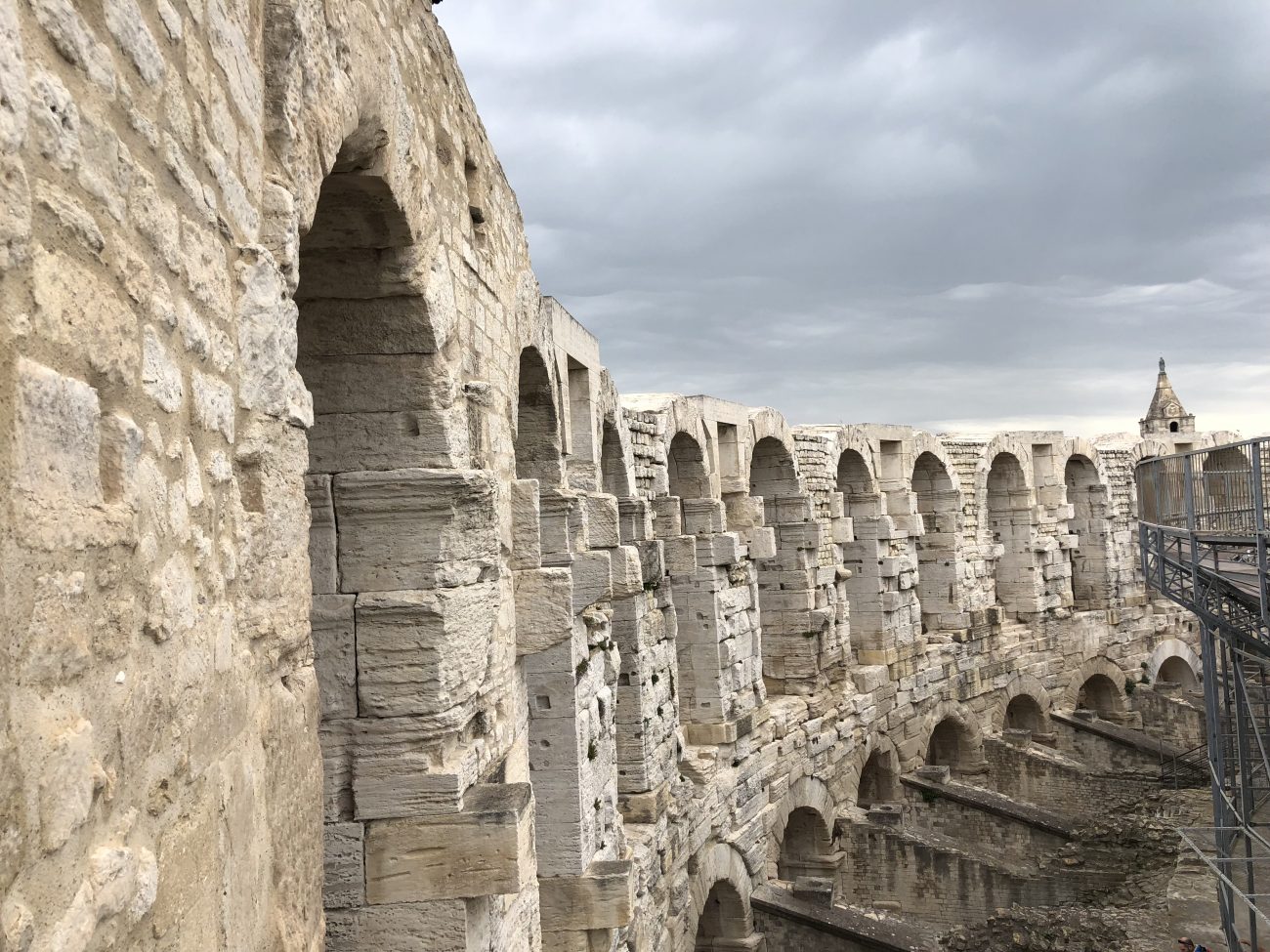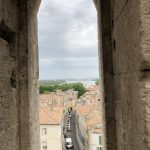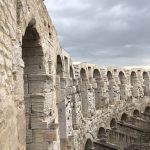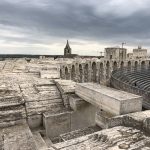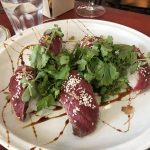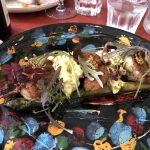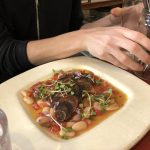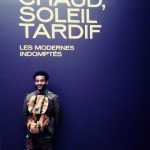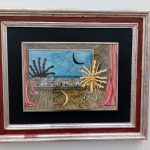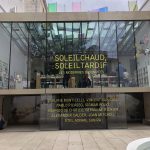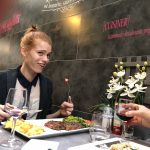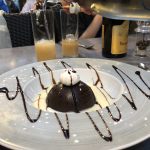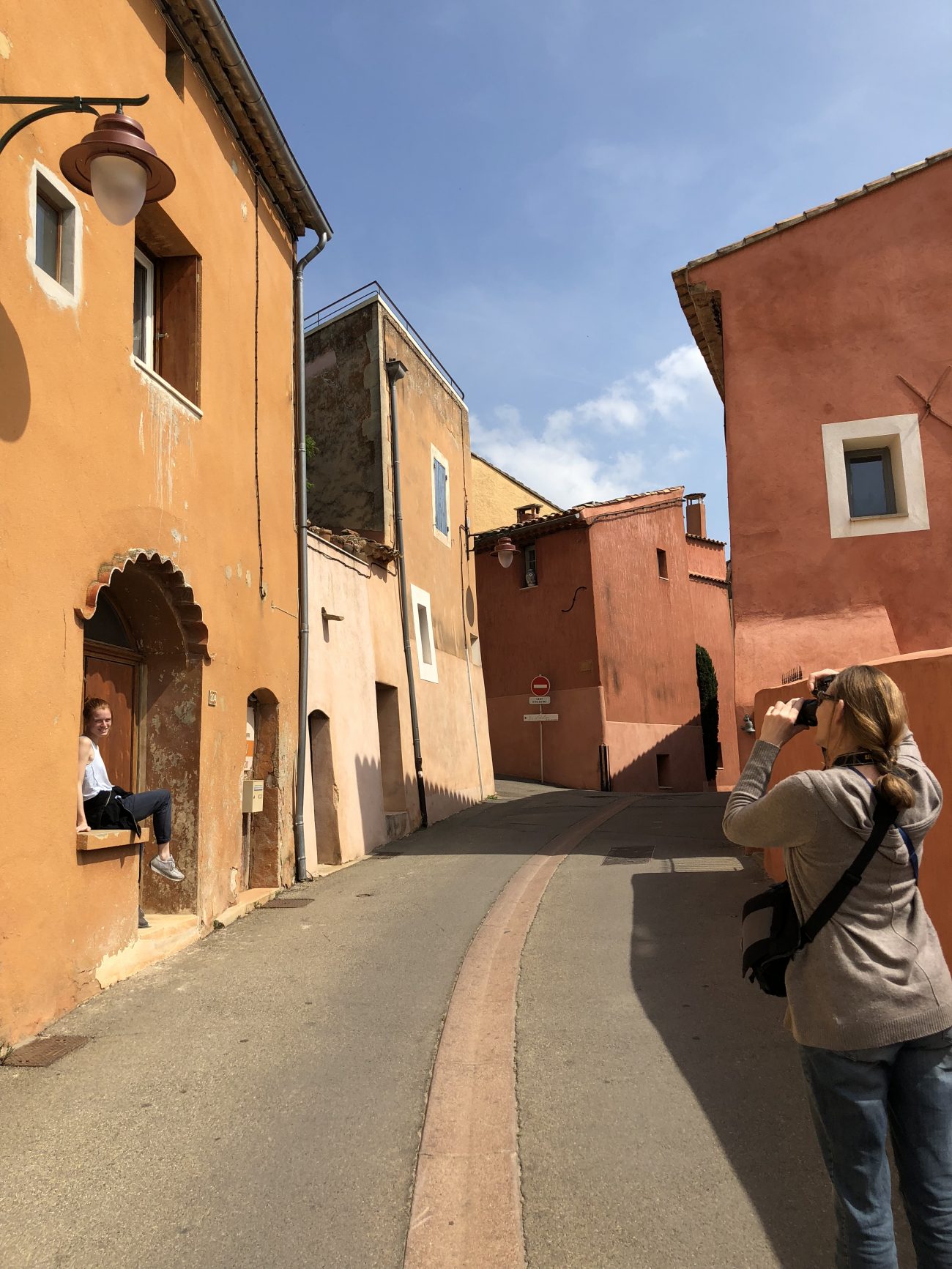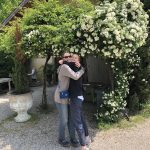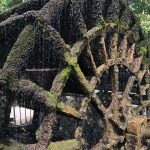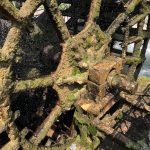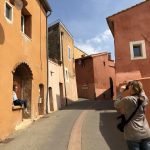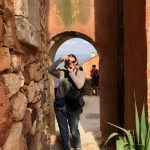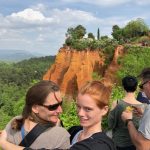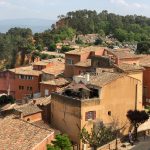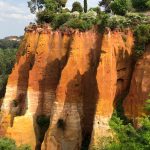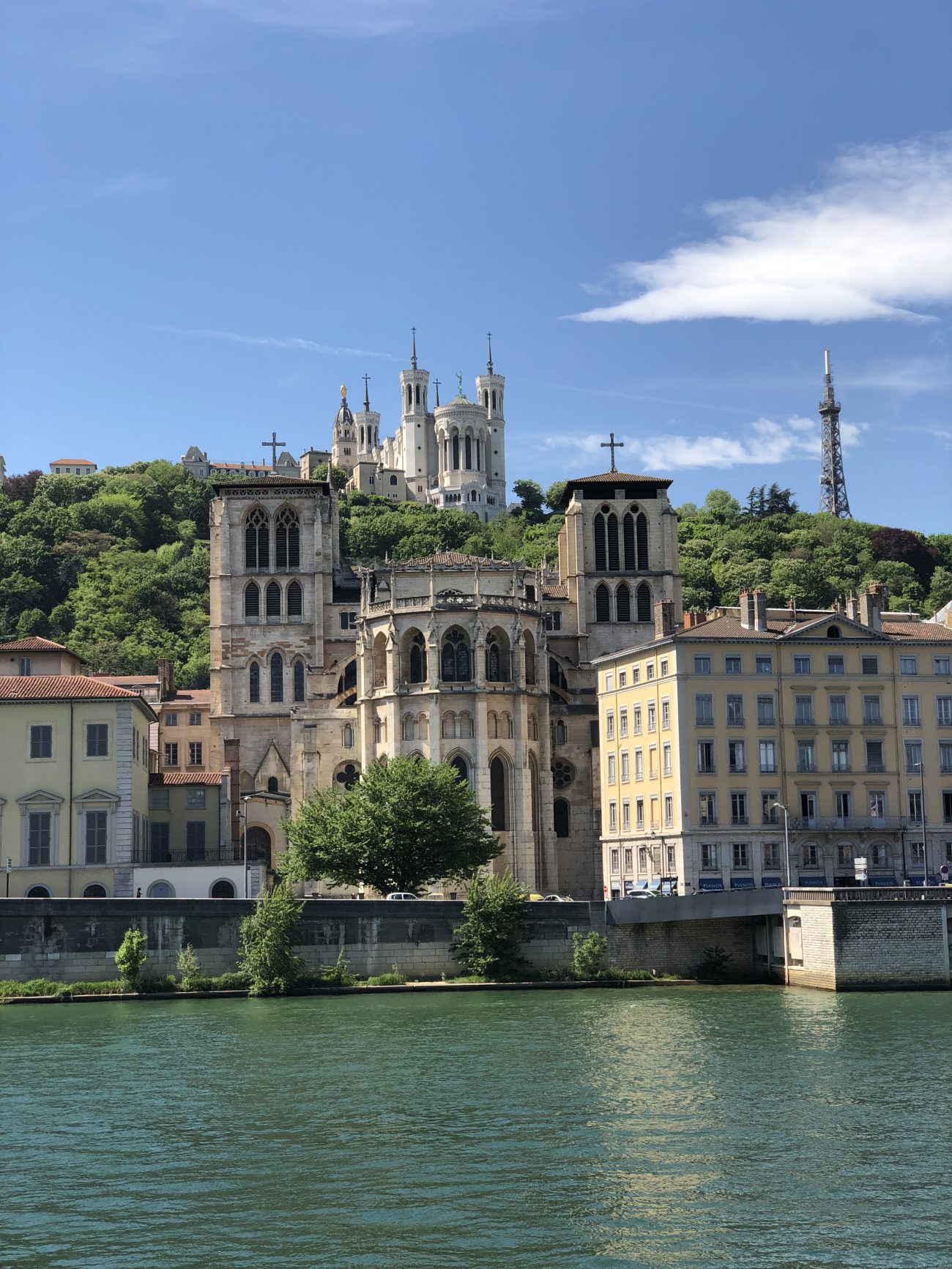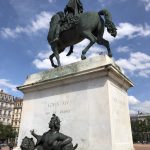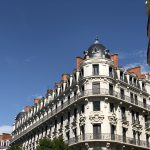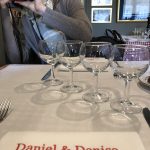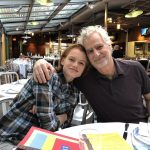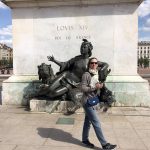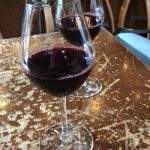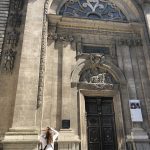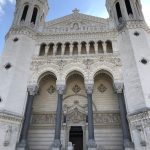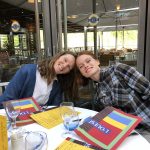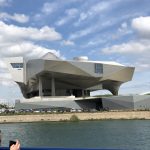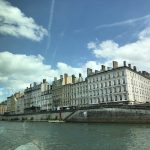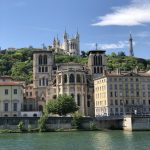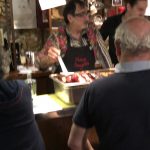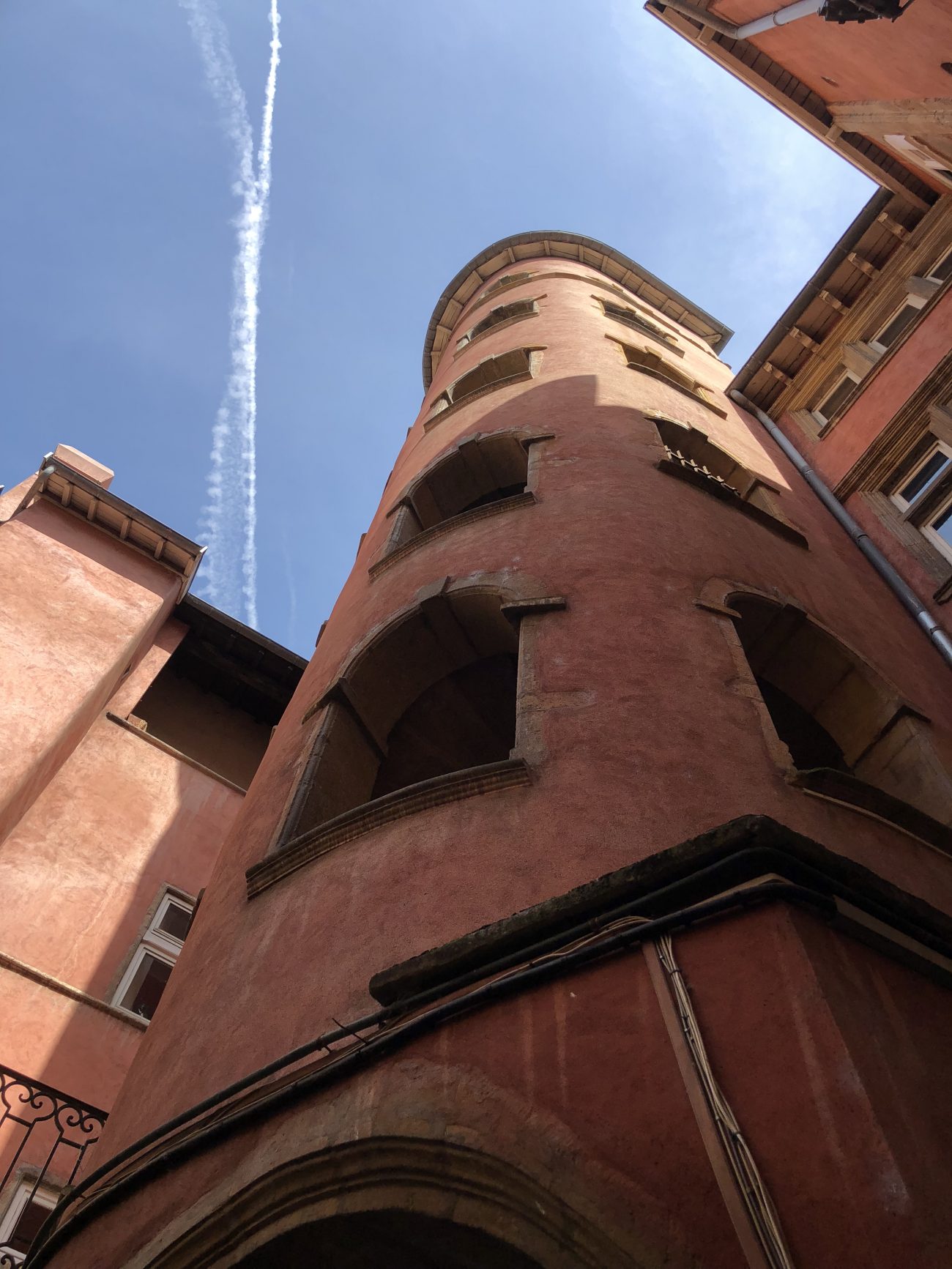Our last five days were in Lyon and we stayed in Cote Jardin, just down the street from our first apartment, but this one was something special. One of the Lyon Renaissance apartments, it was roomy by French standards with two bathrooms, a second floor loft for the bed and bar seating for the kitchenette.
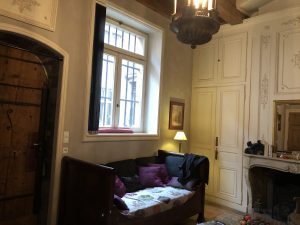
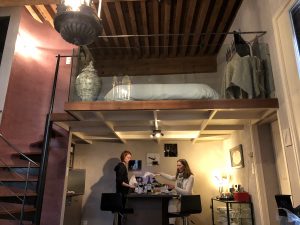
It opened into a courtyard with the 16th century rose tower rising in front of us (usually filled with tourists during the day). Entry was through a traboule on Rue de Boeuf, a small street where 300 silk looms operated in the 18th century. Climbing one set of stairs took us to a small courtyard outside our door where we could enjoy a coffee or glass of wine.
Speaking of the silk trade, Lyon was the last stop on the Silk Road and by 1744, 60,000 of the 100,000 people in Lyon were employed in the silk trade. We learned about this on Saturday when we made our way to the silk museum for a tour and demonstration. If necessary, you can schedule one in English. It’s located in a neighborhood where 40,000 looms once produced fabric. One was still in operation and we saw the process — more than 7,000 silk threads were used to create beautiful fabrics at a pace of about a meter a day. While many of those weavers lost their head in the French Revolution, Napoleon Bonaparte’s thirst for silk revitalized the industry, which continues to thrive today.
A walk through the surrounding neighborhood brought us to a giant fresco, which Phyllicia said was the largest of its kind in Europe.
The weather stayed warm and sunny throughout our stay so a walk across the Rhone to the park and free zoo was in order, topped off by crepes (Phyllicia got the homemade Nutella, Debbie chocolate and me the Grand Marnier).
The days got lazier, the food was spectacular from start to finish, the region’s wines were a delight and we frequented the open market across the Saône to cook a couple dinners and enjoy the Saint-Emilion and Pomerol we brought back with us. We visited Phyllicia at work where she teaches English to Lyon professionals, a site next door to Halles de Lyon-Paul Bocuse, an indoor market where we enjoyed lunch.
The last day was a tour of the Roman amphitheater, built after Lyon became a colony of the Roman Empire called Lugdunum in 47 BCE.
What can you say about Lyon, a beautiful, manageable city that is so close to Provence. We came to visit Phyllicia and though that was the highlight for us, we also fell in love with the city.

Following our day in the St. Emilion vineyards, we hopped the train to Bordeaux, a 35-minute ride to the sizable city where Phyllicia led us on a walking tour around some of the sights, including the “mirror” at Place de la Bourse, before we stopped for lunch (and an absinthe) on the sunny afternoon.
We continued on the tram to the La Cite du Vin, the wine museum where we learned everything we need to know about wine making and more before we discovered Phyllicia’s hidden motive in taking us to Bordeaux — the caneles, a sweet treat we purchased at a colorful shop.
We headed back to St. Emilion for a memorable fireside dinner at L’Envers du Decor: delicious oysters followed by a beef dish with Bearnaise sauce, a 2010 Saint Emilion Grand Cru, all topped off with soufflés and a 20-year-old cognac.

I read that if you want to go to Le Baux de Provence you need to get there early before the rest of the world shows up, and it was good advice. After walking through the village, we were among the first to enter the Chateau Des Baux de Provence, a thousand-year-old fortress with spectacular views over the Provence countryside.


There was a catapult, ruins of the fortress and even some old fashioned rope making skills for Debbie and Phyllicia.

From there we climbed to the top where there is a view of the Les Baux valley, or Vale of Hell, its white sandstone cliffs getting their name from Dante’s description of Hell in the Divine Comedy, which was inspired by this valley.

As the crowds arrived and the rain began to fall, we escaped for the five-hour drive to St. Emilion where we watched the sunset. Not a bad day.

What to do in one day in Arles with the wind blowing dust in our eyes and rain threatening to pour down at any moment. We started by walking the city and then visiting the Amphitheatre (Arena d’ Arles), built by the Romans circa 90 AD, which held 21,000 people for chariot races, gladiators and more light entertainment.
Phyllicia’s friend Martin, an architect from Nîmes, met us and we walked to lunch, which was, of course, delicious.
The first rain drops came down so we opted for the Van Gogh Foundation exhibit of work by Van Gogh, Picasso, Monticelli, Nash, Chirico and more.
We said farewell to Martin, bought a bottle of wine and hid from the rain before dinner at reservation-only Pergola, where we learned that if you can’t run with the bulls or fight the bulls, you can eat a bull rib and it’s delicious, as is the dome du chocolat and everything else.
Tomorrow we get on the road to Les Baux de Provence, Avignon and then on to St. Emilion.

With Lyon as our home base, we carved out a 6-day tour of Provence and the Bordeaux region. I researched some routes from other blogs, so I’m returning the favor.
We left Lyon early down the A7 to Avignon and headed east for a lazy drive through western Provence to Arles. First stop was L’Isle-sur-la-Sorgue, where the Sorgue River was split into channels to drive water wheels, and now is fueled by what some say are more antiques dealers in the little town – some 300 of them – more than anywhere else in France, except Paris.

From there, we continued through the Luberon mountain to beautiful Fontaine-de-Vaucluse, and Gordes, perched on a hilltop.

And on to Roussillon, a multi-colored village built on ochre, where we spent hours before making our way to Arles before dark.
On our third day in Lyon, we boarded the furnicular to La Basilique Notre Dame de Fourviere, a 19th-century basilica with 4 octagonal towers. From there we had lunch at Daniel & Denise restaurant, a Michelin rated bouchon (Traditional Lyonnaise restaurant) recommended by our taxi driver and it lived up to the recommendation. From there we crossed the Saone and took the one-hour boat north and then south to the confluence of the Saone and Rhone rivers with sightings of the orange cheese, green pencil sharpener and the Confluence Musée. Dinner with Phyllicia was at the Paul Bocuse Brassiere L’Ouest, a massive restaurant with wonderful food.
The next day we strolled the markets for lunch and stopped at the Gadagne Musée, just a few doors down from our apartment in Vieux Lyon. We visited the hidden cafe, a charming 4th floor cafe where we had espresso and chocolate. We crossed the river, seeing the sculpture of a man saving himself, and walked to Bellecour, the largest square (rectangle?) in Europe, and on to the Rhone and the long-renovated Hotel Dieu
, a massive complex with shopping — all integrated in the old buildings. Phyllicia arrived to meet us at the La Cave de Voyageurs for a tasting o
f local wines with charcuterie — if only we had known they were bringing in a freshly roasted pork confit and putting it on the bar.
Tomorrow we’re off to Provence…
The French do go on strike. Landing in Paris, we found Air France workers on strike, forcing us first to deplane down steep stairs, and then rent a car for the five-hour drive to Lyon — train workers also were on strike so there were no high speed trains that make the trip in two hours.
We dropped the car and took a taxi to our apartment in Vieux Lyon, the charming area built in the sixteenth century during the Renaissance. We climbed four flights to our apartment and then headed out for lunch and a walk along the Rhone River to enjoy the sunny, 75-degree day. Phyllicia arrived and we walked to the famous L’Ourson qui boi for a spectacular taste of Lyonnaise cuisine.
We had a quiet second day that began at Cosy Corner, a cafe below our apartment, and explored our immediate neighborhood in Vieux Lyon, strolling through the cobblestone paths and learning a bit about the traboules (walkways) through buildings once used by the silk trade to transport goods and later by the French resistance to elude Nazis. Our trip was just beginning, but we’re in love with Lyon already, its beauty, size, people, wine and of course the cuisine.
